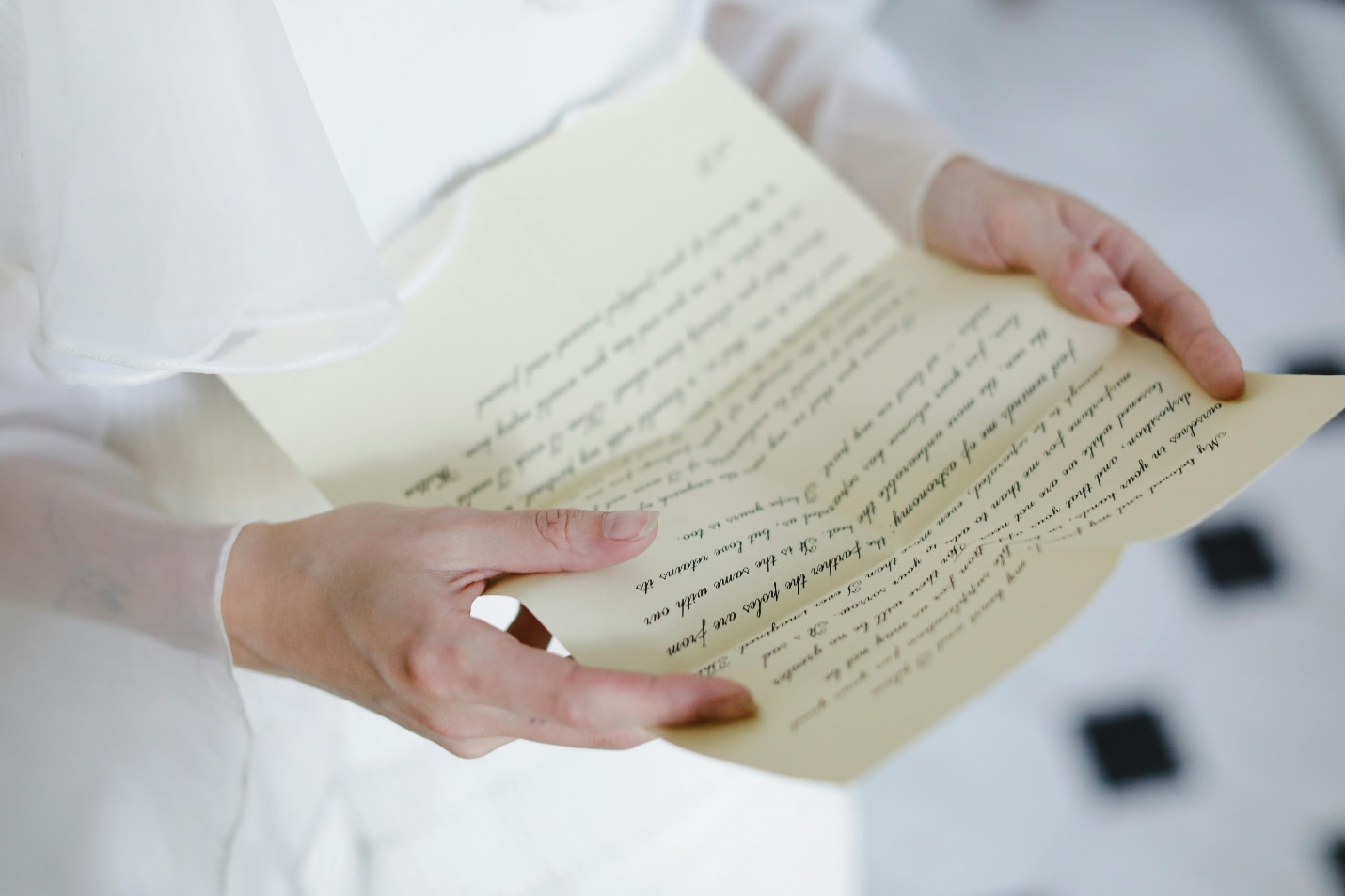Exploring the Half Print Half Cursive Handwriting Psychology
Handwriting has long been viewed as a window into the mind, offering clues about personality, cognitive processes, and emotional states. As an expressive and highly individual form of communication, it carries nuances that reveal more than just words on paper. Among the myriad handwriting styles, half print half cursive handwriting stands out for its unique blend of structured and fluid forms.
This fascinating style has intrigued psychologists and graphologists alike for its potential to uncover deeper insights into human behavior. But what exactly does this mixed handwriting style tell us about its writers? Do you know anything about half print half cursive handwriting psychology?

Part 1. What is Half Print Half Cursive Handwriting?
Half print half cursive handwriting refers to a unique writing style where individuals use a combination of print and cursive lettering within the same text.
This blend of structured print and flowing cursive creates a distinctive aesthetic that often stands out for its variability.
Unlike purely printed or cursive writing, this style lacks uniformity and is characterized by its hybrid nature.
Definition and Characteristics
Half print, half cursive handwriting is not governed by strict rules, making it a personal and flexible expression. This writing style showcases individuality and flexibility, which often piques the interest of graphologists and psychologists.
Here are some of its notable characteristics:
- Intra-word transitions: Writers may alternate between print and cursive within the same word, such as beginning with print and finishing in cursive.
- Adaptable style: Some writers may switch styles based on the letter, phrase, or even their mood while writing.
- Unique flow: The combination often results in a rhythm that’s neither entirely rigid (like print) nor entirely fluid (like cursive).
- Personal notes: A grocery list where some items are written in print and others in cursive.
- Journals and diaries: The variability can add a personal touch, reflecting the writer’s emotional state or creative intent.
- Signatures and documents: A person might use cursive for their signature but default to print for clarity in the rest of the text.
Examples in Everyday Use
PDNob Image Translator
Handwriting to Text Converter enables you to accurately extract text from all types of handwrtings in seconds.
Part 2. The Psychological Implications of Half Print Half Cursive Handwriting
Half print, half cursive handwriting provides a window into a writer's personality and cognitive processes. The way an individual switches between these two styles reflects dynamic thinking, emotional variability, and adaptability.
Here’s what research and handwriting analysis reveal about the psychological underpinnings of this style:
Cognitive and Emotional Insights
The fluid switching between print and cursive in handwriting suggests a dynamic interplay of cognitive and emotional factors:
- Flexible Thought Processes: People who use mixed handwriting styles tend to approach problems with adaptability, capable of toggling between creative and analytical thinking.
- Emotional States: Handwriting often changes with a writer's emotions. Mixed handwriting can indicate shifts in emotional states, with print reflecting more structured thoughts and cursive conveying spontaneity or emotional fluidity.
Personality Traits Associated with Mixed Handwriting
1. Creativity and Adaptability: Writers who blend print and cursive styles often possess creative tendencies. Their handwriting reflects a refusal to conform to one strict style, instead choosing to innovate and adapt.
2. Independence and Nonconformity: The mixed handwriting style suggests individuality and a resistance to following rigid norms. These writers tend to express themselves authentically, valuing uniqueness over uniformity.
3. Detail Orientation: Switching styles purposefully may indicate a heightened awareness of detail. These writers adjust their style to ensure clarity or emphasis as needed.
Part 3. Common Patterns Observed in Half Print Half Cursive Handwriting
Every writer’s half print, half cursive handwriting has its own rhythm and quirks. However, certain patterns are common and provide deeper insight into the writer's habits and thought processes.
Here are the most frequently observed behaviors:
1. Switching Styles Within Words or Phrases
This pattern reflects a natural transition between styles, often influenced by the writer’s intent or mental state:
- Writers might start a word in cursive to connect letters quickly but finish in print to make the word clearer.
- Phrases may shift to print for readability, such as headings or lists, while the main body of text remains in cursive.
2. Consistent Usage of Cursive for Signatures
Cursive remains a preferred choice for signatures due to its fluidity and association with formality. This pattern highlights:
- Formal identity: Using cursive in signatures projects a professional image.
- Ease of repetition: Cursive allows for quicker reproduction of signatures, making it a practical choice for frequent use.
3. Handwriting Variability as a Reflection of Context
- Professional Settings: A mixed style might indicate an attempt to balance speed and clarity during note-taking.
- Creative Projects: Writers may use the mix as a deliberate design choice in journals or artistic endeavors.
Convert handwriting to text free
Part 4. What Does It Mean If Someone Writes Half Print, Half Cursive?
Mixed handwriting styles, such as half print and half cursive, carry deep psychological implications. This blend of styles is a reflection of the writer’s unique characteristics, behaviors, and preferences.
1. Cognitive Diversity
The combination of print and cursive often points to an individual with diverse cognitive abilities. These writers are likely to balance analytical thinking (associated with the structured nature of print) with creative problem-solving (linked to the fluidity of cursive). They adapt their handwriting style to suit the task at hand, showcasing a flexible and dynamic mind.
2. Balancing Speed and Clarity
Switching between print and cursive may indicate a writer’s attempt to optimize their writing for both speed and readability. For instance, cursive may be used when speed is essential, while print is employed for its clarity, especially in professional or formal contexts.
3. Personality Traits
- Individualism: Mixed handwriting signifies a person who values their individuality and embraces nonconformity.
- Versatility: Writers with this style can navigate varied situations with ease, adapting their approach as needed.
- Attention to Context: These individuals are often mindful of their audience or the purpose of their writing, adjusting their style to enhance communication.
This handwriting style serves as a mirror of the writer’s adaptable and multifaceted personality, making it a unique subject of study in graphology.
Part 5. How to Analyze Your Handwriting Style?
Analyzing your handwriting can provide valuable insights into your personality, habits, and thought processes. You can gain a deeper understanding of how you communicate and express yourself by reflecting on the nuances of your handwriting style.
Observe Patterns
- Look at samples of your handwriting in various contexts, such as notes, journal entries, or formal documents.
- Identify whether you switch between print and cursive styles frequently or reserve them for specific situations.
- Pay attention to recurring habits, such as consistent use of print for headings or cursive for signatures.
Reflect on Your Traits
Consider whether your handwriting style aligns with your personality. For example:
- Do you see yourself as creative and adaptable?
- Are you detail-oriented and mindful of clarity in communication?
Leverage Insights for Growth
- Use handwriting analysis as a tool for self-awareness. If you identify tendencies like inconsistency or rushed writing, consider practicing to enhance legibility and flow.
- Align your handwriting style with the purpose of your communication, such as prioritizing neatness in professional settings while embracing mixed styles in personal projects.
Part 6: PDNob Image Translator: The Ultimate Solution for Handwriting Image-to-Text Conversion
When it comes to accurately converting handwriting into editable text, PDNob Image Translator stands out as a game-changer. This innovative solution is specifically designed to handle the complexities of handwriting, making it an ideal choice for both personal and professional use.
PDNob Image Translator
Handwriting to Text Converter enables you to accurately extract text from all types of handwrtings in seconds.
Why Choose PDNob for Handwriting Image-to-Text Conversion?
PDNob uses advanced AI-powered OCR technology to deliver unmatched accuracy, even for complex handwriting styles like print script and mixed formats.
- Exceptional OCR Accuracy
- User-Friendly Interface
- Multi-Platform Support
- Batch Processing
- Versatile Format Compatibility
Benefits of Using PDNob for Print Script Handwriting Conversion
- Speed and Efficiency: Process images in seconds without compromising on quality.
- Customizable Settings: Tailor OCR parameters to specific handwriting styles for optimal results.
- Accessibility: Ideal for students, educators, and professionals managing handwritten notes or archival documents.
Part 7. Practical Tips to Improve Half Print Half Cursive Writing
Whether you aim to refine your mixed handwriting style or enhance its consistency, these practical tips can help:
1. Use Handwriting Improvement Tools
- Leverage handwriting practice books and worksheets tailored to print and cursive styles.
- Explore apps and online resources, such as "Cursive Practice Pro" or printable templates, to hone specific techniques.
2. Incorporate Daily Practice
- Set aside time each day to write, focusing on transitioning smoothly between styles.
- Start by practicing individual letters, then progress to words and sentences.
3. Experiment with Writing Tools
- Different pens and pencils can influence your writing flow. Experiment with options like fountain pens, gel pens, or mechanical pencils to find what feels most natural.
4. Embrace Your Unique Style
- Remember, mixed handwriting is a form of self-expression. Rather than aiming for perfection, focus on making your writing legible and true to your personality.
Convert handwriting to text free
Part 8. Conclusion
Half print, half cursive handwriting is a remarkable blend of structure and fluidity, offering insights into a writer’s cognitive and emotional landscape. It reflects creativity, adaptability, and individuality while balancing practicality with personal expression.
Whether you choose to refine your handwriting for consistency or cherish its unique character, it remains an essential aspect of your identity.
By understanding the psychological and personal significance of mixed handwriting, you can gain a deeper appreciation of its role in communication and self-expression. Embrace the diversity of your handwriting style—it’s as unique as the person behind the pen.
PDNob Image Translator
Handwriting to Text Converter enables you to accurately extract text from all types of handwrtings in seconds.






